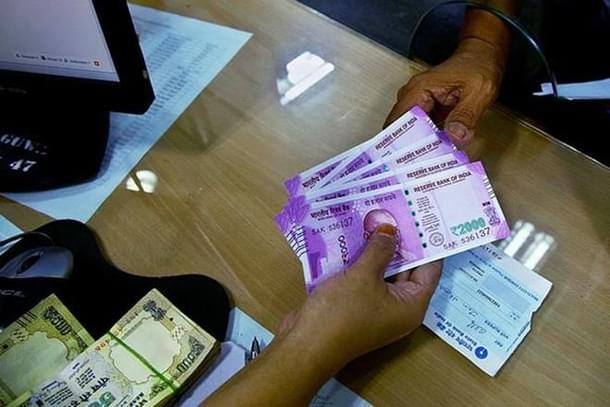Economy
DeMo Year GDP Data Looks Unreal, But There’s No Evidence Of Hanky-Panky
R Jagannathan
Feb 05, 2019, 03:53 PM | Updated 03:53 PM IST
Save & read from anywhere!
Bookmark stories for easy access on any device or the Swarajya app.


The release of revised GDP data for 2016-17 and 2017-18 by the Central Statistics Office (CSO) last week has drawn the usual disbelief all around. The first revised estimates for 2017-18 show GDP growth up from 6.7 per cent to 7.2 per cent; even more eye-brow raising is the upward revision in the demonetisation year’s figure of 7.1 per cent to 8.2 per cent.
The problem with any criticism of these upward revisions is that once a methodology for computation is adopted, you cannot keep rubbishing it just because the results don’t accord with your own sense of what is happening in the economy.
The first object of derision will be the 2016-17 GDP growth upgrade from 7.1 per cent to 8.2 per cent – a rise of more than one per cent, and significant.
However, the reality is that in 2016-17, even though demonetisation came in November, the real impact of the cash crunch did not show up till much later, since people still had old savings under their beds, and moreover were eager to dispose of their high-value notes at petrol pumps or municipal treasuries or other places that were allowed to accept them for a few days after 8 November. People also borrowed, and urban citizens shifted to debit cards to pay their bills and make everyday purchases. In the cash-based rural sector, past savings and informal borrowings would have helped prevent a production crisis in the November-March period of 2016-17.
Hence, assuming you accept the new method of calculating GDP, this kind of revision is not surprising.
The second wonder would be the 2017-18 revisions, especially if we assume that the big impact on the farm and informal sectors came after a lag. This is reflected in the 7.2 per cent GDP number, revised 0.5 per cent upwards from the earlier estimate of 6.7 per cent.
But GDP is nothing but GVA (gross value added) plus indirect taxes minus subsidies. The last two elements cannot be fudged as they come directly from the budget numbers. If you exclude them, the 0.5 per cent bump-up in GDP is higher than the GVA rise of 0.4 per cent rise. It is only in GVA that methodology can make a big difference to the final total.
The CSO’s explanation (read here) that came along the new data release shows that the biggest change happened in the primary sector (mostly agriculture), where GVA rose from the previously estimated 3.3 per cent to 5 per cent. The secondary and tertiary sectors show lower gains of 0.2 per cent (5.8 per cent earlier to 6 per cent in the second revised estimates) and 0.3 per cent (7.9 per cent to 8.1 per cent). Barring agriculture, the revisions look less than spectacular. As for agriculture itself, crop estimates tend to vary wildly quarter to quarter, and hence one may yet get a final picture that is quite different from the one we have got.
You don’t have to believe the numbers, but you must believe the trends. A shift in the way something is measured, if consistent, will not change a trend, unless the methodology is wholly wrong and arbitrary. As of now, there is no evidence of that.
For the government, the lesson is simple: don’t get carried away merely by the topline GDP growth numbers of over 7 per cent all though the National Democratic Alliance term. It is what underlies the numbers, from the double balance-sheet problem to slow investment revival, weak export growth, and under-par growth in the goods and services tax numbers that needs fixing. The monthly GST collection target of Rs 1.12 crore projected in the 2018-19 budget has always been missed so far. Clearly, the recovery is less robust than the GDP figures indicate.
Jagannathan is former Editorial Director, Swarajya. He tweets at @TheJaggi.




